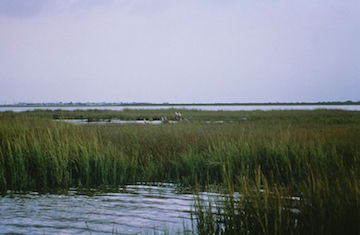450617-changing marshes.jpg

Many salt marshes are at risk due to climate change. Credit: US Fish and Wildlife Service
Salt marshes cover millions of acres of American coastline, particularly along the Gulf of Mexico. Their shallow, grass-filled waters provide habitat for fish and shellfish, birds, and other critters. They also filter nutrients from runoff, which can reduce the “dead zones” that sometimes form offshore. And, they help limit coastal flooding during tropical storms.
Yet like much along the nation’s coasts, many salt marshes are endangered. A recent study says that, by the end of the century, many of them may be transformed to mangrove forests, or to barren salt flats. The changes will be driven not by higher sea levels -- although that’s also a threat -- but by changes in temperature and rainfall.
Researchers studied salt marshes, mangrove forests, and salt flats in 10 estuaries along the Gulf coast. They also looked at climate records, and at models of how the climate could change in the decades ahead. In particular, they considered temperature increases of up to about seven degrees, and rainfall swings of up to 10 percent from modern levels.
The scientists concluded that the most significant changes will come in Texas, Louisiana, and parts of Florida. Many marshes will be transformed to mangrove forests. In other areas, grasses and other plants will be replaced by mats of algae. And there will be changes in the wildlife that inhabits the coast.
The researchers suggest that the changes won’t be limited to the Gulf of Mexico, though -- they’ll happen on coastlines around the world.

